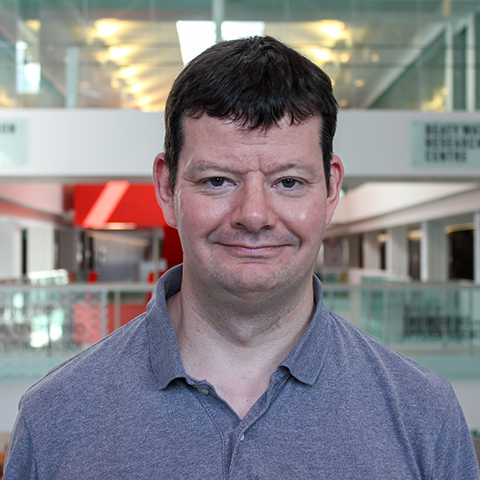
Testing and Modeling of Reinforced Concrete
Research in this area includes the behaviour of shear critical structures, optimization in terms of both geometry and material use, buried reinforced concrete pipes and the use of recycled concrete aggregate (RCA) for structural applications. By combining new sensor technologies such as distributed fibre optic strain sensors and digital image correlation with full-scale experiments, research students working in this area are helping to develop a better understanding of how new and existing reinforced concrete infrastructure behave.
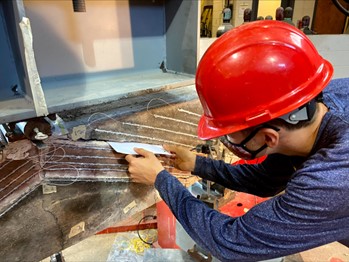
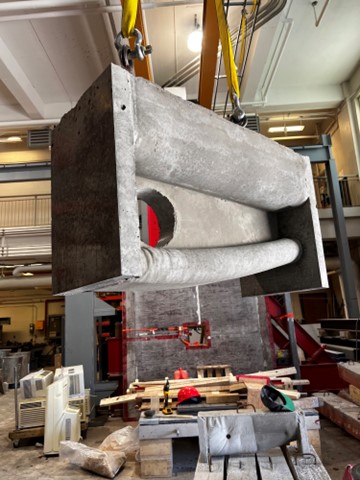
Deteriorated Infrastructure Performance
Research in this area includes the behaviour of corroded reinforced concrete structures, corroded steel pipes, corroded steel members, and cast iron pipes. One of the most significant questions facing engineers today is "how much deterioration is too much deterioration?" This is not an easy question to answer as most structures are complex and highly redundant systems (there are a number of ways for a load applied to a structure to be reacted). Research students working is this area develop techniques for creating controlled yet realistic deterioration and testing these deteriorated structures to failure to determine what is too much deterioration.
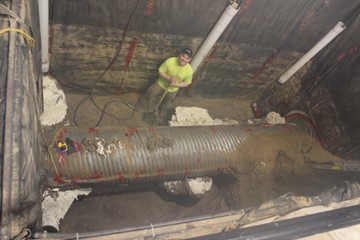
Buried Infrastructure
Dr. Hoult works closely with colleague Dr. Ian Moore in this area to better understand the performance of both new and deteriorated buried infrastructure assets such as steel culverts and reinforced concrete pipes. Large-scale experiments are conducted using the unique Buried Infrastructure Lab, which enables the testing of pipes under shallow burial conditions while being subjected to additional surface loading. Here again, the use of cutting edge sensor technologies allows an understanding of pipe behaviour that is only possible due to the facilities available at Queen's.
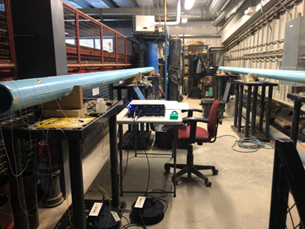
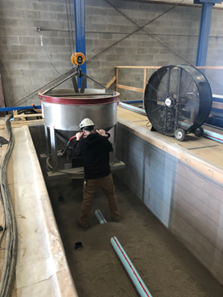
Structural Monitoring
Dr. Hoult's research group takes advantage of cutting edge structural monitoring technologies in almost every research project. However, some projects focus on monitoring to help assist in the assessment of new and existing infrastructure assets. With recent advances in wireless sensor networks (WSNs), fibre optic sensing, and digital image correlation (where Hoult collaborates with colleague Dr. Andy Take), monitoring technologies offer the opportunity to enable pervasive monitoring. These systems could give engineers the data required to both keep existing structures in service longer and to optimize the design of new structures. The use of fibre optic sensors to determine distributed strain profiles and overall structural performance is another area of ongoing interest.
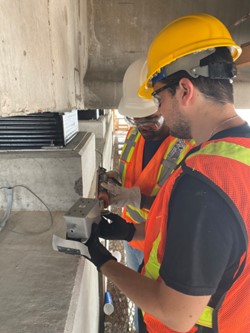
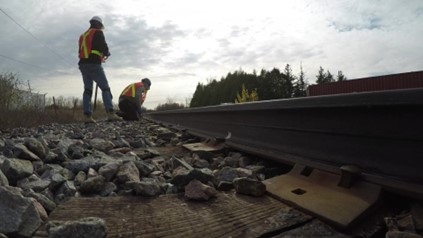
You can find Dr. Hoult's publications at his Google Scholar Page!


Hometown: Ottawa, Ontario
Co-supervisors: Dr Josh Woods (Queen’s) and Dr Colin MacDougall (Queen’s)
MASc research: Takeo’s research investigates the unique challenges associated with the design of public art installations including assessing the correct design load cases for one of a kind structural systems.

Isabel Heykoop
Hometown: Oakville, Ontario
Co-supervisor: Dr Josh Woods (Queen’s)
MASc research: Isabel’s research focuses on the development of inexpensive tools for structural health monitoring and assessment of bridges by leveraging recent developments in inexpensive consumer electronics such as MEMS, IoT, and UAVs. She also hopes to develop automated tools for processing the acquired data including the use of AI. Working in conjunction with the City of Kingston, she will use the new Waaban Crossing as her test bed.
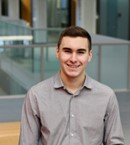
Hometown: Oakville, Ontario
Co-supervisors: Dr Evan Bentz (U of T), Dr Josh Woods (Queen’s), Dr John Orr (University of Cambridge – research advisor)
MASc research: Jared’s research focuses on the shape and structural optimization of reinforced concrete elements to minimize their environmental impact. Through a series of experiments that will take advantage of cutting-edge instrumentation techniques such as distributed fibre optic sensors (DFOS) and digital image correlation (DIC), Jared will explore the impact of optimizing RC sections on structural behaviour. His work is supported by industry partners Arup, AECON, KPMB architects, and Lafarge as well as the City of Kingston and the CAC.
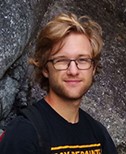
Hometown: Squamish, BC
Education: B.A.Sc. Civil Engineering, University of Waterloo (2020)
Co-supervisor: Dr. Andy Take (Queen’s University)
MASc research: Sam’s research will investigate the stress distribution of helical piles both during installation and during loading. The application of helical piles to support railway embankments over weak subgrades will also be investigated.

Hometown: People’s Republic of China
Education: B.A.Sc. Civil Engineering, Queen's University
Co-supervisor: Dr Ian Moore
MASc Research: Structure analysis of trenchless liner rehabilitation method.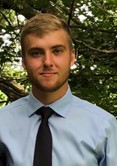
Hometown: Bolsover, ON
Education: BASc (Eng) Civil Engineering, Queen's University (2020)
Co-supervisors: Dr. Ian D. Moore (Queen's University), Dr. Joshua Woods (Queen's University)
PhD Research: Jonathan studies the use of hybrid simulation for soil structure interaction testing of pipe systems. His work brings together expertise in the area of large scale buried infrastructure testing with cutting edge distributed sensing and hybrid simulation techniques.
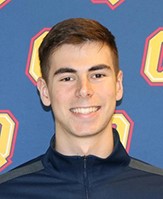
Jacob Yager
Hometown: New Orleans, Louisiana, USA
Education: B.Sc. (Eng) Civil Engineering, Queen's University (2020)
Co-supervisors: Dr Evan Bentz (U of T) and Dr Josh Woods (Queen’s)
PhD Research: Jacob is investigating the behaviour of functionally graded reinforced concrete beams to lower cement content in and carbon emissions from reinforced concrete. He employs dynamic distributed fibre optic strain sensing technology and Digital Image Correlation to understand the global behaviour of these beams as well as the local behaviour of concrete interfaces. His research explores the effects of various layering techniques to determine the viability of functionally graded concrete for strength, serviceability, and environmental considerations.
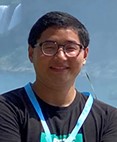
Hometown: Suzhou, China
Education: BEng Civil Engineering, Harbin Institute of Technology (2019)
Co-supervisor: Dr Liam Butler (York University)
PhD research: Fuzheng is investigating thermal buckling behaviour of continuous welded railway tracks with the help of distributed fiber optic sensors and artificial intelligence techniques. The objective of this research is to create a digital twin version of existing railway systems, which can identify the in-service structural response of railway systems under various loading scenarios and provide owners with operational strategies to minimize the risk of buckling.
Some Previous Graduate Students
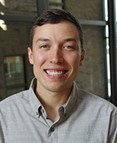
Jack Poldon
Hometown: Toronto, ON
Education: BASc Civil Engineering, Queen's University (2017)
PhD Research: Jack studied the response of reinforced concrete deep beams with advanced distributed sensor technologies. His experimental campaign involved testing large reinforced concrete beams in the structures laboratory then comparing the results against models and design code predictions. Jack’s research was published in the ACI Structural Journal as well as fib Structural Concrete (see Dr Hoult’s publication page for further details).
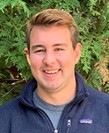
Jack Gillham
Hometown: Halifax, NS
Education: BASc (Eng) Civil Engineering, Queen’s University (2019)
MASc research: Jack's research aimed to better understand the behaviour of steel bridges through the use of distributed fiber optic sensors (FOS). In particular, Jack was interested in using FOS for real-time detection of reaction forces at intermediate bridge supports. This involveed monitoring a three-span composite steel bridge throughout construction as well as conducting scale model laboratory tests. Jack’s research was published in Engineering Structures and the ASCE Bridge Engineering journal (see Dr Hoult’s publication page for further details).
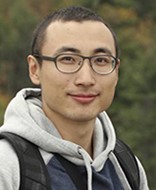
Yuchen Liu
Hometown: Shenyang, China
Education: MASc, Engineering Mechanics, Tongji University (2016)
Co-supervisor: Dr. Ian D. Moore (Queen's University)
PhD Research: Yuchen is monitoring corrugated steel culverts in the field using fibre optic strain sensors. He is also conducting finite element analysis to study soil-culvert interaction behaviour by modeling the laboratory and field experiments. The objectives of the research are to investigate the structural behaviour of the corrugated steel culverts, assess the reserve capacity of the in-service culverts, and improve the current design methods. Yuchen’s research was published in the ASCE Journal of Bridge Engineering and Journal of Pipeline Systems Engineering and Practice (see Dr Hoult’s publication page for further details).
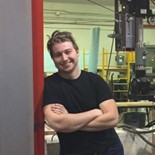
Christian Barker
Hometown: Toronto, ON
Education: BEng (Civil) McGill University, MASc (Civil) Queen's University
MASc Research: Christian's research investigated the use of distributed fibre optic sensors to measure axial strain (and stress) in continuous welded rails in collaboration with Canadian National and the National Research Council. Christian studied the effect of temperature on distributed fibre optic strain measurements and worked to optimize traditional (discrete) railway bridge monitoring techniques using this technology. Christian’s research was published in the ASCE Journal of Bridge Engineering and Journal of Performance of Constructed Facilities (see Dr Hoult’s publication page for further details).

Titilope Adebola
Hometown: Kogi, Nigeria
Education: MASc Materials Science and Engineering, African University of Science and Technology, Nigeria (2013); BASc Petroleum Chemistry, American University of Nigeria (2011)
Co-supervisor: Dr. Ian D. Moore (Queen's University)
PhD research: Titi investigated the long-term properties of a Cast-In-Place polymer composite liner used in water pipe rehabilitation. Experiments that she carried out will make it possible to relate the long-term properties to the key limit states experienced by the liner in-service and thereby develop QA/QC procedures.
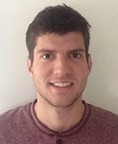
Hometown: Kingston, ON
Education: BASc (Eng) Civil Engineering, Queen's University (2014)
Co-supervisor: Dr. Ian D. Moore (Queen's University)
MASc Research: Jake is undertaking full-scale laboratory experiments to understand the performance of rehabilitated metal culverts. Experiments include: the rehabilitation of two circular corrugated metal culverts using grouted sliplining methods, and the rehabilitation of a horizontal ellipse corrugated metal culvert using a paved invert method.
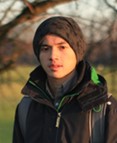
Dong (Joe) Wang
Hometown: Yangzhou, China
Education: BEng Civil Engineering, South China University of Technology (2015)
Co-supervisor: Dr. Ian D. Moore (Queen's University)
MASc research: Joe’s research is focused on non-destructive testing (NDT) for buried pipes. He uses total station and LiDAR systems to monitor pavements to infer the effect of frost-induced differential ground movement on small diameter cast iron water pipes. He will also be investigating methods to detect erosion voids next to culverts.

Sara Nurmi
Hometown: Nanaimo, B.C.
Education: BASc (Eng) Civil Engineering, Queen's University
MASc research: Sara's research investigated the effect of axial restraint on the behaviour of one and two-way slabs. She used distributed fibre optic sensors to measure both the specimen response as well as the applied load from the restraint system.

Jiachen (Joanna) Zhang
Hometown: Hangzhou, China
Education: BASc (Eng) Civil Engineering, Queen's University (2015)
MASc research: Joanna’s research aims to use distributed fiber optic strain sensors for structural health monitoring of the shear behaviour of reinforced concrete structures.
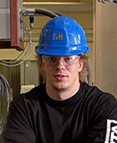
Kyle Van Der Kooi
Hometown: St. Catharines, Ontario
Education: BASc (Eng) Civil Engineering, Queen's University (2015)
Research: Kyle is investigating the behaviour of steel truss railway bridges and the feasibility of monitoring these structures through the use of distributed fiber optic sensors.
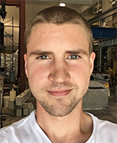
Andre Brault
Hometown: Toronto, ON
Education: BASc (Eng) Civil Engineering, Queen's University (2014)
PhD Research: Andre's research focuses on the use of distributed fibre optic sensors for the purposes of structural optimization and structural health monitoring. His research involves the testing of new reinforced concrete structures in the field, the testing of several different reinforced concrete specimens in the laboratory, and the modeling of complex reinforced concrete building behaviour.

Katherine Michaud
Hometown: Fredericton, NB
Education: BASc University of New Brunswick (2013), MASc (Civil) Queen's University
MASc Research: Katherine's research explored the use of recycled concrete aggregate for use in reinforced concrete slabs. She conducted a series of mix tests with industry partner Lafarge and then tested one slabs using varying amounts of RCA. She used distributed fibre optic strain sensors to examine the differences in behaviour between slabs with no RCA replacement and those with varying levels of RCA replacement.

Eric Pannese
Hometown: Milford, New Hampshire, U.S.A.
Education: BASc (Eng) Civil Engineering, Queen’s University (2016)
Co-supervisor: Dr. Andy Take (Queen's University)
Research description: Eric is using dynamic distributed fibre optic strain sensing technology to monitor vertical railway track displacements in the field. The goal of this research is to expand upon our current knowledge of railway track behaviour when subjected to train loading in order to promote track maintenance strategies that minimize the risk of derailments.
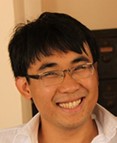
Hometown: Hochiminh City, Vietnam
Education: BEng Civil Engineering, Ryerson University (2010), MASc Civil Engineering, Queen's University (2013)
Co-supervisor: Dr. Ian D. Moore (Queen's University)
Research description: Van performs small scale experiments, large scale experiments, and numerical analysis to study the effect of erosion voids on the stability of deteriorated metal culvert. The objectives of his research are (i) to understand how erosion voids develop beside deteriorated metal culverts, (ii) to study the impact of unrepaired and repaired erosion voids on the stability of deteriorated metal culverts using large scale experiments, and (iii) to develop guidelines for culvert assessments.

Lisa Wheeler
Hometown: Leduc, AB
Education: BASc Civil Engineering from the University of Alberta (2009)
Co-supervisor: Dr. Andy Take (Queen's University)
Research description: Lisa is measuring rail, sleeper, and ballast displacements using Digital Image Correlation in order to calculate track modulus before and after railway subgrade remediation as well as using distributed dynamic fiber optic sensing to measure rail strains and study the effect of gaps on the distribution of loading from the rail to the sleepers.
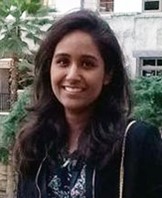
Jane M. Peter
Hometown: Abu Dhabi, UAE
Education: BEng (Hons.) Civil Engineering, Heriot-Watt University (2013)
Co-supervisor: Dr. Ian D. Moore, Queen’s University
PhD research: Jane specializes in the response culverts in the presence of erosion voids to surface live loads using full-scale experiments. The objectives of her research include (i) replicating the effects of an erosion void adjacent to flexible and rigid pipes and exploring the responses under the action of unfactored and fully-factored vehicle loads, (ii) discerning the extent to which grouting (repairing) the erosion void restores the behaviour of the deteriorated system to the pre-void condition, (iii) testing the repaired culvert up to its ultimate limit state and establishing the failure mechanism, and (iv) investigate changes in the bending moment distribution due to voids of different sizes.
Please feel free to contact Dr. Hoult about potential projects in each research area.